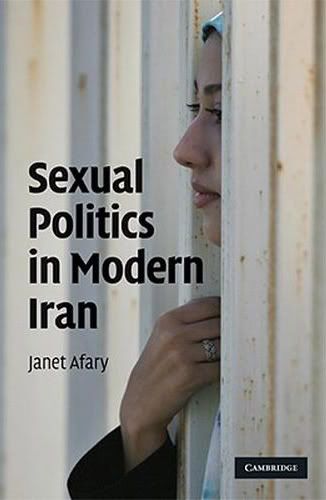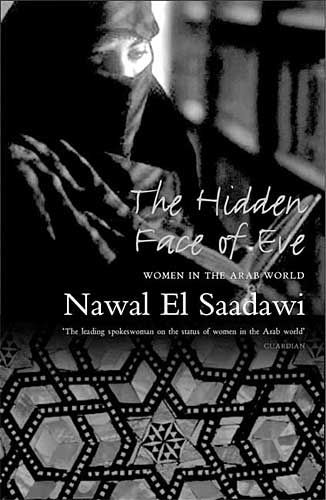From Nawal el Saadawi to Janet Afary
Dear Janet,
 I am glad to see you’ve been reading my work since you were a graduate student. Did you read my work in English or Persian? (I write in Arabic.) I very much enjoyed your book: Sexual Politics in Modern Iran. Egypt, my country, and Iran have many things in common, both in the past and the present.
I am glad to see you’ve been reading my work since you were a graduate student. Did you read my work in English or Persian? (I write in Arabic.) I very much enjoyed your book: Sexual Politics in Modern Iran. Egypt, my country, and Iran have many things in common, both in the past and the present.
Today in both countries, opposition groups are gaining more power against local regimes. Like you, I am optimistic that we will soon be free of both religious, patriarchal, and neo-colonial domination.
You speak in your book about what you called “sexual revolution,” which began in Iran seven decades ago and is still going today. Is it really a sexual revolution? And what do you mean by that? Are you referring to actual relations between men and women, inside and outside marriage? I wonder if sexual liberation can really happen in Iran, or any country, without political, economic, and educational liberation happening first, or at least happening together.
I agree with you that sexual and marriage customs and laws are changing radically in Iran, thanks to the growing number of educated and economically independent women. This is happening also in Egypt, in spite of the increasing numbers of veiled women. But many veiled women in Iran and Egypt (and other countries) use the veil to gain more social and sexual freedom.
A married Egyptian woman I know used to meet her male lover in her bedroom under the cover of a veil. She and her women friends were veiled, so he would wear one, too, and her husband would let him in, thinking he was one of her women friends.
Algerian women hid weapons under the veil during the revolution against French occupation. Iraqi women today use the veil to fight against American occupation. They feel free to protest on the street as long as they are veiled. I would like to discuss with you some of the points of the history of the veil. You know already that the philosophy of veiling women did not start in Islam. The same is true of many other traditions: honor killings, the stoning of sinful women, checking virginity through an intact hymen that bleeds on the wedding night, polygamy for men only, moral and sexual double standards, circumcision for boys and girls, chastity. All these unjust traditions got carried over from the slave system into the feudal into the capitalist present.
In most countries in the East and West, people honor the name of only the father and make the name of the mother shameful. The mother’s name is ignored and dies in history. In the U.S. and Europe, many women carry the name of their husbands, which is worse than carrying their father’s name, since they have to change their names if they change husbands.
I agree with what you say in your book about paradoxes in Iran today. The current political system and sexual social norms are clashing with the capitalist colonial values the society tries to adopt. In Egypt we have similar paradoxes. Young Egyptian women today are torn between two different political powers: Islamization and Americanization of Egypt. You can see young women in the streets covering their heads with the veil and uncovering their bellies in American blue jeans.
Do you see that in Iran today?
Nawal
From Janet Afary to Nawal el Saadawi
Dear Nawal,
 I am thrilled to be having this dialogue with you. I read your Hidden Face of Eve and other works in English in the 1980s when I came to the United States from Iran to study. I have also used your writings in my courses on women and gender in the Middle East.
I am thrilled to be having this dialogue with you. I read your Hidden Face of Eve and other works in English in the 1980s when I came to the United States from Iran to study. I have also used your writings in my courses on women and gender in the Middle East.
Egypt and Iran do indeed have a great deal in common. Both nations have experienced a century-old struggle for democracy (the latest stage of which was the massive protests against voting fraud we’ve just witnessed). Both have had strong secular and leftist political parties, and both have a long history of feminist activity. You were wondering if what we are observing in Iran in recent years is really a sexual revolution. I think it is certainly headed that way when we look at the distance women have traversed.
A century ago Iranian women of all social classes, religions, and ethnicities entered strictly arranged marriages around the age of puberty. Both of my grandmothers were married at 13, and neither had seen her husband before marriage. Also, while monogamy was the norm among the poorer sectors, most Muslim men took additional wives once their income increased. By 1979, a lot had changed. Courting and a long engagement were more common, at least among urban, educated middle class women.
Today dating is even more common despite continued parental objections and state prohibitions. In an Iranian feminist publication, I saw an interview with an assistant principal in one of the lower middle class schools of south Tehran. The principal said that while young girls of her own generation skipped school to go to parks and cinemas with boys, her students go to their boyfriends’ houses or their own houses. And yes, they sometimes have sex. In some cases, fathers assist sons, and mothers quietly help daughters. When a veiled mother was brought into the principal’s office and told about her daughter’s secret dating, she confessed that to protect her daughter from her father’s wrath and the morality police on the streets, “on occasion I tell her to bring her friend home with her and I go into the kitchen giving them some privacy.”
Among the more cosmopolitan middle classes, virginity is no longer crucial. Greater access to cars has meant greater privacy, allowing more women to become sexually active before marriage. Many women from the more pious middle classes have premarital sex and then a hymen repair operation before getting married. The popularity of the operation has resulted in numerous jokes that in Tehran, there are “no real virgins.”
Change is happening even in rural areas (now 20 percent of the country). Occasionally, engaged couples spend the night away from the village on one pretext or another, and the parents go along with it. Sometimes the couple exchange vows for a temporary marriage (an old Shi’i tradition that had become defunct by the 1970s) to avoid the appearance of impropriety. In Tehran and the big cities, young people might obtain a simple certificate of temporary marriage to avoid the morality police when they go to the Caspian Sea resort for summer vacation. They then annul the vow when they get home.
Ironically, it was some of the policies of the Islamic Republic that accelerated this change. As you know, the regime implemented a series of harsh misogynistic policies aimed at urban middle- and upper-class women in the 1980s. The state encouraged polygamy (multiple formal wives) and temporary marriage, as well as the return of easy divorce. It banned abortion and placed many limits on contraceptive use. These measures served to compensate men who had acquiesced to the rules of the new theocratic state. So, in the name of morality and the preservation of women’s honor, men of all social classes gained easier, cheaper access to sex, both inside and outside of marriage.
However, in the decade the followed, the same state instituted policies that unwittingly educated poor women about their sexuality and emotional needs. The state offered sex segregated literacy classes for women, including married women. Because the state was now “Islamist,” fathers and husbands relented and allowed daughters and wives to go to school or even the university. When birth rates skyrocketed in the 1980s, the state implemented a very successful family planning program, insisting that birth control was not a Western phenomenon but common in early and medieval Islam. Soon contraceptives became widely available, and vendors sold condoms on urban street corners. (Check out this Iranian ad for condoms.) Couples attended required state-sponsored sex education classes before marriage; many young urban and rural women first learned about female orgasm in these classes. These two major changes — greater literacy and sex education — altered the institution of marriage and attitudes about sexuality.
Today in urban and even rural communities, arranged marriages and cousin marriages have become much less common. The laws have not changed — daughters still need their fathers’ legal permission to marry. But marriage is seen less and less as just an institution for procreation, and women have come to expect intimacy and spontaneity along with a greater degree of emotional and sexual closeness.
In watching the protests on the streets of Iran these days, I have been surprised by the fact that popular support for state policies is much weaker. Thirty years ago, the state easily recruited over a hundred thousand women from the more pious sectors of society to confront women’s rights activists. Today, the state has mostly relied on the brutal force of the police and Basij volunteer forces to put down the advocates of democracy. Many women from the more pious sectors and their children were among those who voted for presidential candidate Mir Hossein Mousavi and his accomplished wife Dr. Zahra Rahnavard. This shows that the old cultural divides of the 1970s, what Nikki Keddie called a “society of two cultures” — one urbane, secular, and modern, the other conservative and pious — have substantially narrowed.
However, let me add that more modern gender and sexual norms have had many negative consequences as well: exceedingly high rates of unprotected sex, marital unhappiness, unemployment, prostitution, drug addiction, and suicide. Although premarital sex is becoming more common among urban youth, the young men feel little responsibility or obligation toward the young women they sleep with. Few use contraceptives, and the burden of avoiding pregnancy falls mostly on the women. Young women also have no legal protection from sexual molestation and rape, unless they admit to the authorities that they engaged in premarital sex, in which case the woman’s punishment is harsher than that of the male perpetrator. The young women we see fighting on the streets of Iran for freedom and democracy are fighting not just for an abstract concept of liberation (azadi) but for greater individual, social, and economic rights and laws that would reflect the realities of their lives.
Thanks for initiating this dialogue. I see similar trends in the Arab Middle East, particularly with regard to women’s education and employment, though not birth control and sex education, and like to know how the institution of marriage is evolving in Egypt.
Janet
Nawal El Saadawi is an Egyptian feminist writer, the author of Memoirs of a Woman Doctor, The Hidden Face of Eve: Women in the Arab World, Woman at Point Zero, and Memoirs from the Women’s Prison among other books and articles. Janet Afari holds the Mellichamp Chair in Global Religion and Modernity at the University of California Santa Barbara, where she is a Professor of Religious Studies and Feminist Studies. Among her previous publications are The Iranian Constitutional Revolution, 1906-1911 and Foucault and the Iranian Revolution. This dialogue was first published by Double X on 6 July 2009; it is reproduced here for educational purposes.
